Nick is the Founder of CHIROBASIX, a marketing agency that specializes in helping Chiropractors dominate their local markets and drive new patient acquisition.
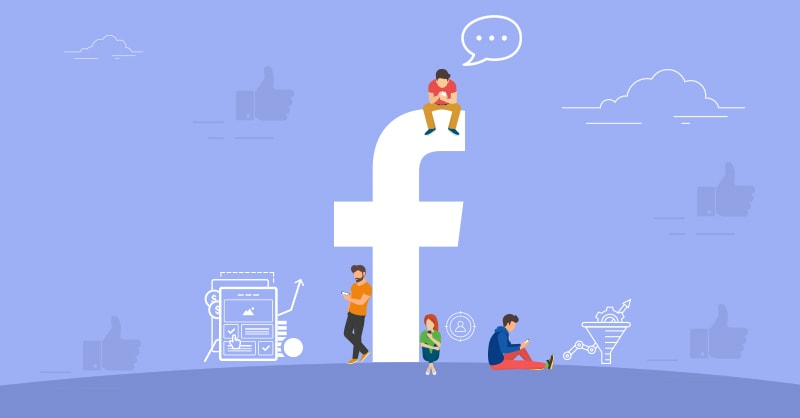
It’s no secret that Facebook Ads can be a great channel for Chiropractors to promote your practice. Running a Facebook Ad campaign for your practice has a ton of potential to drive in a lot of new leads and patients to your practice. There are a lot of Chiropractic marketing strategies out there, and Facebook advertising is one of the top digital strategies you can use to generate new patients.
Your Chiropractic Facebook campaigns will help drive local awareness of your practice, generate new leads, and most importantly, drive in new patients. There is a lot that goes on behind the scenes to make your Facebook Ad campaigns successful. We’re going to break down the best Facebook Ad strategy for your Chiropractic practice and how to execute so you can get started with your Facebook campaigns today.
To get started, the first thing we want to prepare is the overall strategy for your Facebook campaigns. A lot of Chiropractors out there are strictly running a “New Patient Special” ad to capture new leads. Although this can get some traction, a lot of times this can result in poor quality leads. With bad contact information and unresponsive leads, you’ll feel like you wasted your time and money.
Instead, we’re going to use our “Jab, Jab, Jab, Right Hook” strategy that we outline here. This is going to result in getting significantly better quality leads with your Facebook Ad campaigns.
In order to grow, you need more people in your local community to know, like, and trust you. The best way you can grow your exposure and connect with your community is to provide education and promote that with your Facebook Ads. We recommend doing this by creating Chiropractic educational videos. On a regular basis, create a 1 to 3-minute video and provide something educational and valuable to people that helps them with their health.
This is going to do several things for you:
As people watch your videos, you are building a relationship with them. That rapport that you start building with your videos is going to be the very beginning in becoming the go-to resource for health-related support in your community.
When someone watches your video, you can now put them into a custom audience in your Facebook Ad Manager and start to retarget them. Once they are in your retargeting audience, you can feed them more and more content. This is how you hit them with the “Jab, Jab, Jab”. Pushing several pieces of content to them over the course of time helps them become more and more familiar with you. You are growing your relationship with them.
Over time, your audience of engagers will grow and you’ll have hundreds and thousands of people in your community that have learned things from you through your videos. You’re filling the top of the sales funnel and nurturing them down with your content.
That’s when you come in with your “Right Hook”.
Now that you have an audience of people who know, like, and trust you, you can retarget them with your New Patient Special. This is a lead generation ad that gets people that have been watching your videos and engaging with you to raise their hand and say “I’m ready to start care”.
The best part about these leads is that they are warmed up already. They’ve seen your videos, they’re educated, they know who you are, and trust you. Now is your chance to bring them into the office and help them directly with their health. These leads are going to convert into actual patients at a much higher rate because they’re already pre-positioned and bought into what you have to offer. You’ll probably pay more for each lead, but it’s worth it if the conversion rates are significantly higher and you end up with better quality patients coming into your office.
You have probably been the target of retargeting ads yourself if you’ve ever shopped online (especially Amazon). You viewed a product you had some interest in, and then all of the sudden you see that same exact product over and over again like it’s following you around. This is exactly what you’re going to do, but instead of a product, you’re retargeting with content to build authority and trust.
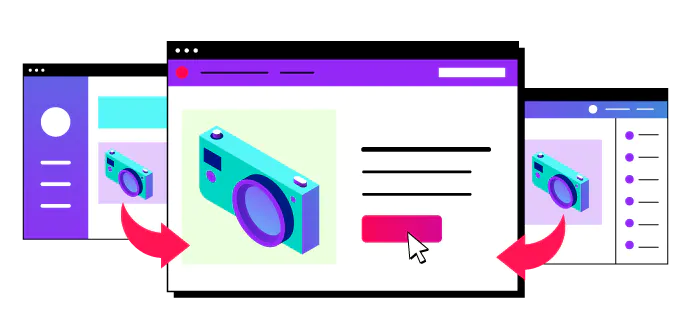
The first step is to create some educational videos. We ask our clients to create 3 or 4 videos upfront to start out with. Then make a commitment to create at least 1 new video every 2 weeks at a minimum. This allows us to start with a good set of videos upfront and then rotate in new content over time so it doesn’t get stale.
Your videos should be short and easily digestible. We recommend keeping it under 5 minutes. Usually, the 1 to 3-minute mark is a good goal. The content of the video should be you on camera talking and providing something that is valuable. This is not you pitching your service, but rather giving people education on a particular topic and even some takeaways that they can implement in their own lifestyle. For example:
Think about the experiences you have in your office with your patients. What are educational topics that you seem to go over frequently with patients to help them better understand their health? Take those common topics and create a short video about them.
Creating videos is also a lot easier than you would expect. You don’t need to overthink this part. We wrote a whole guide on how to actually create these videos easily and quickly. You can check that out here.
In your Facebook Ad Manager, click on the “Create” button to start creating a new campaign. It will ask you to select a campaign objective and you’ll want to select “Video Views”. This campaign will be designated to drive that educational content. Give your campaign a name (ex: “Video Views”). You can skip creating ad sets and ads for now. We’ll do that next.
Create another campaign and select the “Lead Generation” objective and give this campaign a name as well (ex: “Leads”). This will be the campaign for pushing out your new patient special and how you’ll collect leads through an online form.
We like to create a third campaign as well and use the “Messages” objective. This is designed to get users to message your Facebook page and is a great alternative to the lead collection forms to start conversations with potential patients.
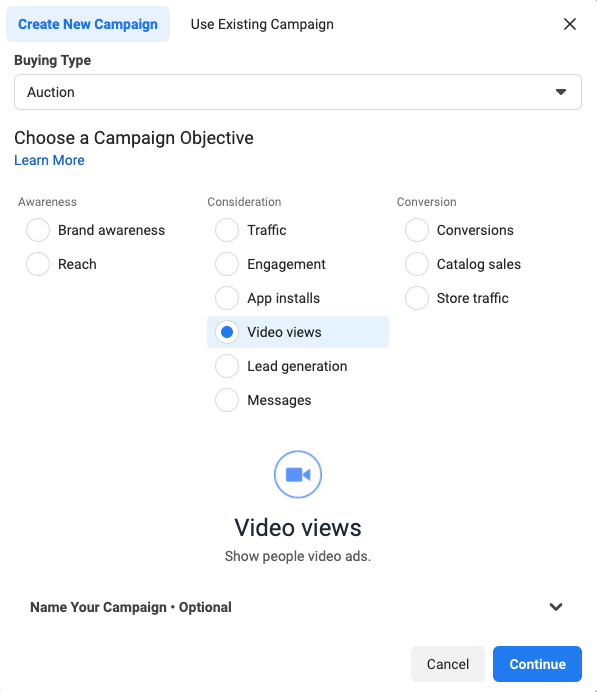
These will be the three primary Facebook campaigns you’ll need to run.
Inside your campaigns, you’ll want to create multiple ad sets. The ad set is where you designate the audience that your ads will serve to. Here are some audiences you should consider testing out for your campaigns:
You can set this audience up by simply typing in your address and creating a radius around your office. It’s probably a good idea to set an age range for your average adult patient.
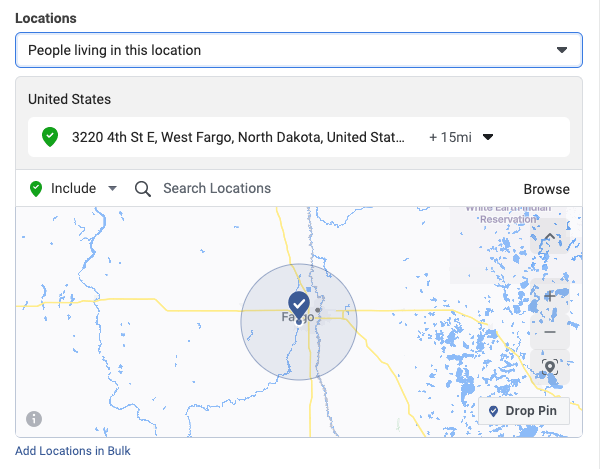
This is similar to your broad audience, but instead, you can layer on different interest targeting for those interested in wellness-based interests. Those showing interest in wellness activities may be more apt to respond to health-related content and take action for their health.
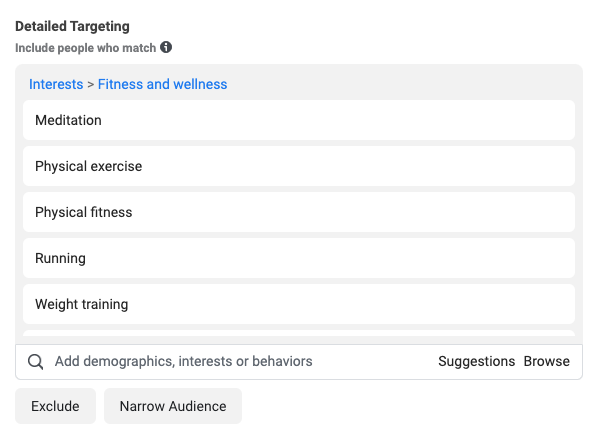
Another audience to test for those that are showing interest in symptoms related to what you do. Not all symptoms are going to be available but think outside the box on things related to the symptoms you treat.
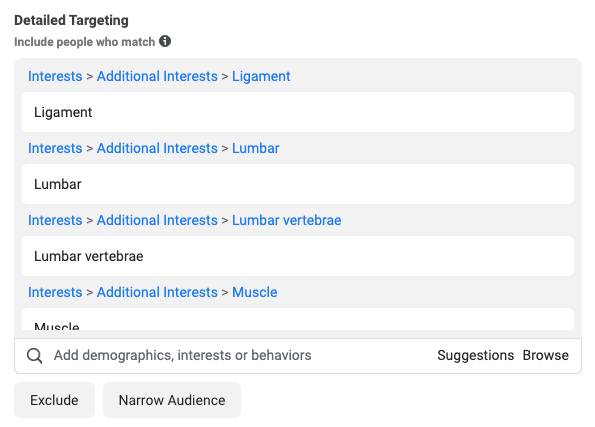
In your Facebook Audience Manager, you can set up multiple custom audiences. We’ll create a couple to set up your Lookalike audiences.
For the first lookalike audience, export a list of your existing patients from your EHR. Upload that list to your Facebook audiences. Then you’ll have the option to create a “lookalike” audience. It will try to find Facebook profiles of your patients and then use that data to find other potential patients that have similar attributes.
For the second lookalike audience, set up an audience using your Facebook pixel for website visitors. Set it for anyone who has visited your website over the last 180 days. Then create a lookalike audience from your website visitors. This will try to find people on Facebook that have similar attributes to those that visited your website.
When you go to set up the Lookalike Ad Set, you’ll use both of these audiences.
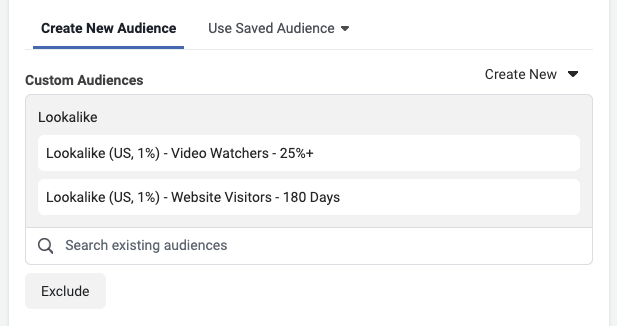
You already created the Website visitor audience in the previous step. Next is to create an audience for those who viewed your videos. You’ll create a custom audience again but this time select “Video” from the sources. Next, select people who completed at least 15 seconds. It will then ask you to select your videos. When you upload your educational videos, you’ll want to come back in here and make sure to add them to your audience each time.
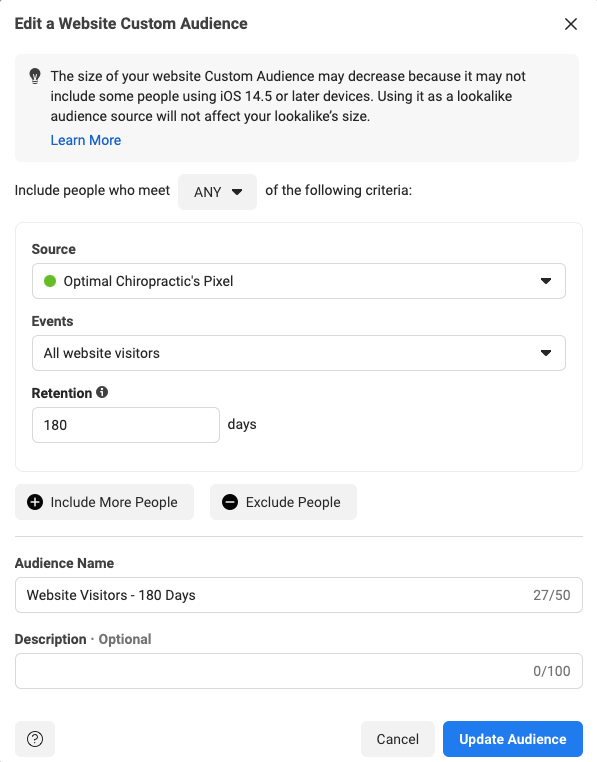
Inside your “Video Views” campaign, you’ll want to try all of these audiences we just created. This helps you target cold audiences with your videos. Create a new ad set for each audience.
Inside your “Leads” and “Messages” campaign, you’ll find the “Remarketing” audiences to be the most effective because they have already been warmed up. You can try pushing these ads to cold audiences, but they will perform better with people who have already engaged with you.
First, for your “Video Views” campaign, you’ll want to post these videos on your Facebook Page’s organic feed. Write a simple snippet of text that compliments the content in the video. Once your videos have been posted to your feed, you’ll be able to select these posts in your Ads Manager.
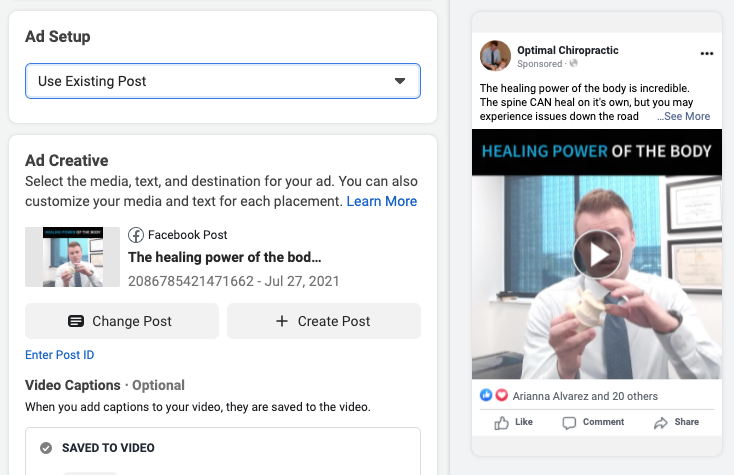
This is better than creating the ads in the Ads Manager because it compounds the views, reactions, and engagements into the single video post rather than having separate posts for each of your Campaign’s Ad Sets.
Do this for each Ad Set (audience) in your Video Views campaign. Once that’s ready, feel free to launch these ads. It will take time for them to run and build up a big audience for you to remarket. Over time, more and more people will start falling into your “Remarketing” audience because they’ve watched your videos. Depending on your budget, you might even want to run these for a couple of weeks by themselves without running your lead ads yet. This gives that audience time to build up.
Next, we’ll set up your “Messages” campaign. Again, the best audience to put in this campaign is your Remarketing audience. Here is where you are going to give your audience the offer to come in and see you.
The “Call To Action” should be something like “Sign Up”. You can set up a Message Template to give them predefined options to reach out to you. Plus, if they select those predefined message options, you can set up auto-responses to give them the next steps. This helps streamline communications and eases up the level of follow-up from your team.
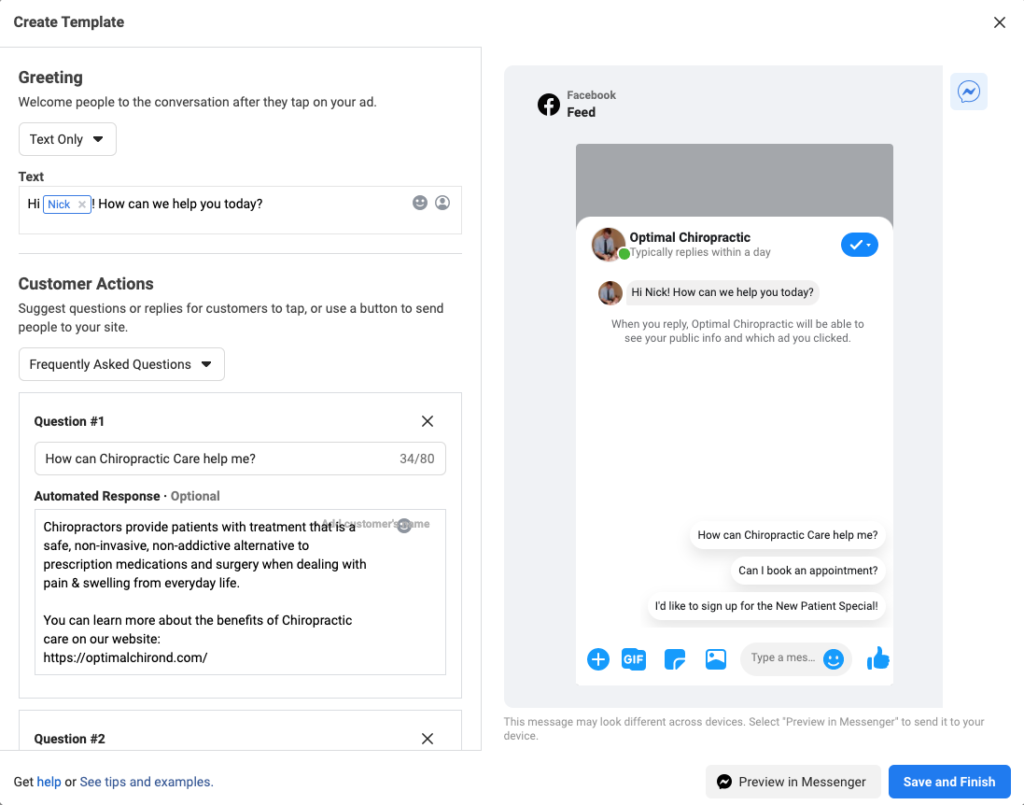
For the “Leads” campaign, you’re going to want to set up a Facebook form in order for users to submit their information. These types of ads are notorious for pulling in bad leads. But by warming up your audience with Video Views, and following these tips below, you’ll see a significant increase in lead quality.
When creating your form, select these options for best results:
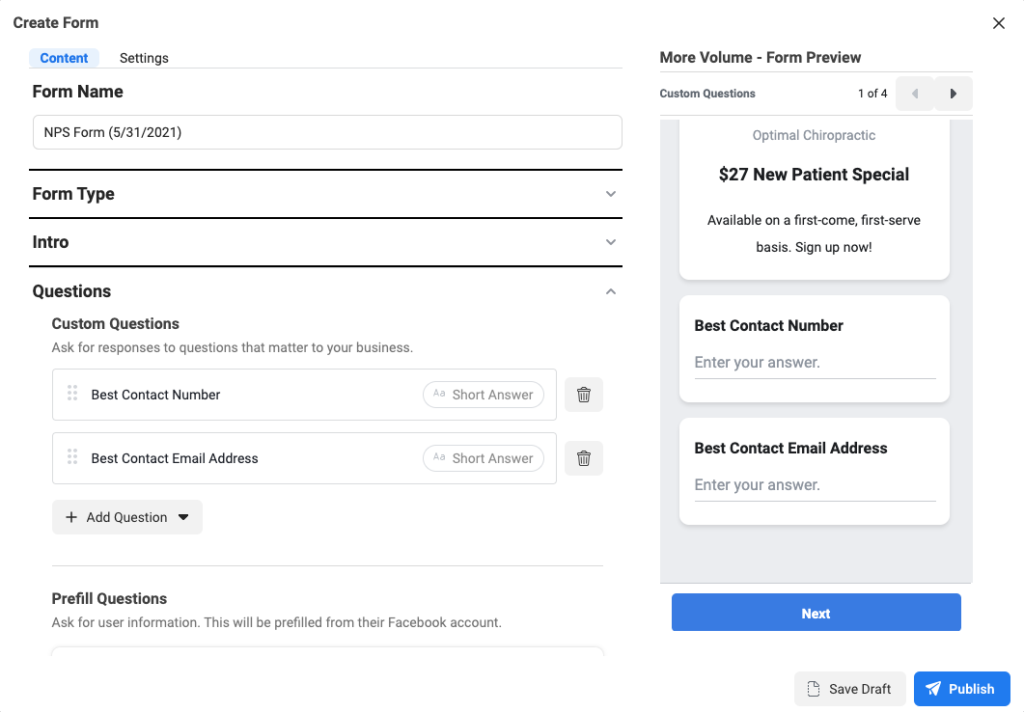
Now that your Lead Forms and Messaging templates are set up, the last step is to create your ad copy. When writing your ad copy, use the following structure:
The visual part of your ad should be some photo or video of you working on a patient. This helps show you in action and starts putting it in the patient’s mind that they can get this work performed by you to help fix their problem.
Test different imagery and videos to see what works best.
What is extremely valuable is having a professional photographer come in to shoot a big batch of photos for you to use. Get shots of you in your office, working with patients, your team, around your office. The bigger variety you can get to play around with and use, the better. This will come in handy for your Facebook Campaigns as well as other marketing initiatives.

As your ads run, you’ll want to monitor their success to make sure they are working for you and getting you the best results possible. Plus, you can run A/B tests with different Facebook audiences, Ad creative, copy, images videos, etc. to constantly try and improve the performance.
For your Video Views campaign, you’re primarily going to be watching the Cost per ThruPlay at the Ad Set level (audiences) and at the Ad level. This will tell you which audiences are watching your videos and which videos are performing best. Use this insight for when you are creating future videos.

For your Lead generation and Messages campaigns, you’ll primarily be focusing on the Cost per Lead or Cost per Message. Again, you’ll monitor this at the Ad Set level to see what audiences are working best, as well as the Ad level to see which ad creative is working best.

Setting up all of your Chiropractic Facebook Ads is a lot of work and can get pretty technical. All the nuances can get in the way of getting your campaigns launched and working properly to get the most out of it. Going through the steps and executing strong Facebook campaigns is worth it because you’ll propel your practice growth significantly. And remember to be patient and trust the process. The growth doesn’t happen overnight. It takes consistency and diligence to make this all work.
If you find yourself struggling to get results with your ads, or just to get them set up and running properly, we’re here for you.
Nick is the Founder of CHIROBASIX, a marketing agency that specializes in helping Chiropractors dominate their local markets and drive new patient acquisition.
Let’s connect and chat about how we can dominate your market.
Get growth tactics, interviews, and articles delivered right to your inbox.